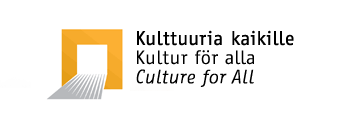Comment the Draft of cross-cutting guidelines of the Working Group for Cultural Policy, Immigrants and Promotion of Cultural Diversity

The Ministry of Education and Culture appointed a working group on cultural policy, immigration and cultural diversity on 9 January 2020 to prepare proposals for cultural policy guidelines to develop the administrative branch in the near future. The term of the working group is from 9 January to 31 December 2020.
The Draft of cross-cutting guidelines of the Working Group is now open for comments.
The discussion of policy proposals will continue at the working group meeting on 30th October. You can comment on the draft version by sending an e-mail to the expert secretaries of the working group Maija Lummepuro and Sini Keinonen (firstname.lastname (a) minedu.fi). Comments can be send in by 25.10.
Draft of the guidelines
Cross-cutting guidelines
- In Finnish cultural policy and artistic and cultural life, equity and equality must be ensured not only at the level of principles but also at the level of practice. No one in Finland may be subject to discrimination on the basis of factors such as origin, skin colour, citizenship or nationality, language or religion, or any other reason associated with the person. Apart from direct discriminatory treatment, attention must also be paid to structural and intersectional discrimination and racism.
- A rich artistic and cultural life requires respect for the tangible and intangible cultural heritage and a desire and capacity for renewal, as well as wide-ranging inclusion and participation. Finland is a home to people who create art and thirst for art from many different cultures and civilizations in the world. Art and culture in Finland must be open to new Finns and to new cultural influences and influencers.
- Education and competence have always been the foundation for the success of the Finnish nation. All people living in Finland must have the opportunity, as active citizens, to increase their knowledge and skills, and to utilise their competence and creativity in practical life. The motivation to become an artist or a professional in the cultural sector should be increased and the flame of the motivation created should be cherished, especially with regard to children and young people.
Guidelines
- The ethnic, linguistic and cultural diversity of society is mainstreamed into all art and cultural policy planning and decision-making. Decision-making systems in art and culture should be developed so that they reflect the altered demographic structures of Finland.
- The state’s funding for arts and culture is developed so that cultural diversity is visible and has a cross-cutting impact in funding systems. Other providers of funds for arts and culture are encouraged to take account of the diversity of society in their activities.
- The employment of art and culture professionals of foreign origin brings new know-how and international networks to Finland. It is important to see multilingualism and diverse cultural competence as a human resource that also enriches Finnish cultural life. Discriminatory practices in recruitment must be eliminated.
- Artists and cultural professionals who have moved to Finland already have much knowledge and skills when they arrive. However, in order to be able to function fully and equally in the Finnish field of art and culture, many of them need to develop their language skills and other competencies. Conditions are created for improving the knowledge and skills required for working and career advancement in Finland.
- Art and culture are used to promote the participation and inclusion of immigrants in Finnish society. The accessibility of art and cultural services is improved by lowering the threshold for participation in the planning, communication and implementation of activities. In integration services for immigrants, particular attention is paid to the specific features of the art and cultural sector and to the opportunities offered by art and cultural activities.
- The potential of art and culture to break down walls separating people, shorten social distances and build links and bridges needs to be exploited more. With the help and agency of art and culture, routes to a more equal and equitable Finland in the future can be planned. Unequal and racializing elements in activities must be examined systematically.
- Strengthening multilingualism and other diversity in Finnish cultural policy and art and cultural life requires scientific research, other studies and the use of indicators concerning obstacles to the realisation of equity and the attainment of the goals set. Monitoring and evaluation of practices is also needed.
The website of the working group
Draft: Cross-cutting guidelines PDF
or in Finnish:
Luonnos: läpileikkaavat ja aihekohtaiset linjaukset 8.10.2020 PDF
